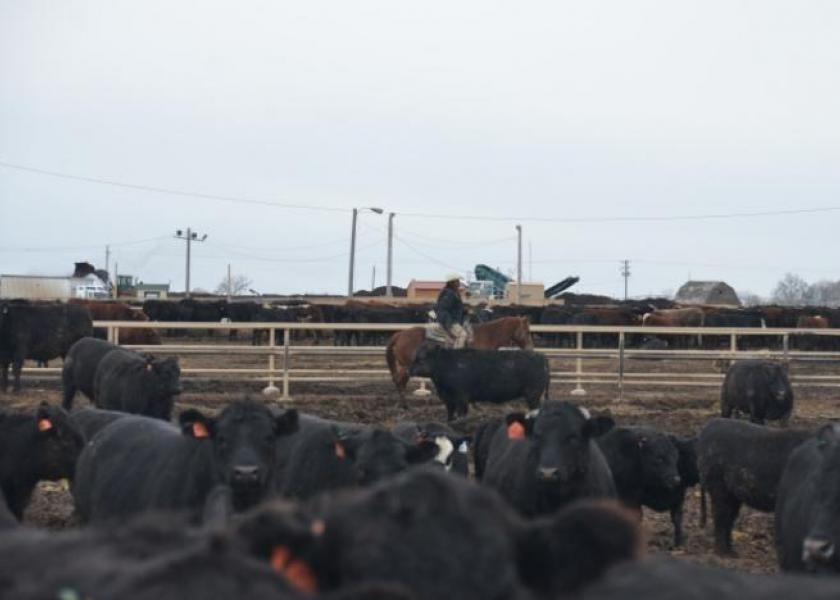More Heifers On Feed Keeping Slaughter Higher In 2019

The October USDA Cattle on Feed report contained no big surprises. The feedlot inventory on October 1 was 11.3 million head, down 1.1 percent from one year ago. This is the second consecutive month of year over year decline in feedlot totals. Placements in September were 102.0 percent of last year while September marketings were 101.1 percent of one year ago.
September 2019 had one more business day compared to last year. The twelve month moving average feedlot inventory reached 11.6 million head in August and has dropped slightly in the past two months. It is possible that feedlot inventories have peaked cyclically although there is still a chance that average feedlot totals could push slightly higher into early 2020.
The quarterly cattle on feed numbers for October 1 showed that the number of steers on feed was 6.9 million head, down 3.1 percent year over year. The number of heifers on feed was 4.4 million head, 2.3 percent higher year over year compared to October 1, 2018.
Over the last 20 years, heifers have represented an average of 36.7 percent of feedlot inventories. On October 1, 2019, heifers represented 39.1 of feedlot inventories; the highest percentage in more than 18 years. This is up from 31.0 percent on April 1, 2015; a record low heifer on feed percentage which occurred early in the current herd expansion.
Total steer and heifer slaughter thus far in 2019 is up 1.0 percent year over year. Year to date steer slaughter is down 2.4 percent year over year while heifer slaughter is up 7.4 percent from one year ago. Yearling carcass weights are approaching a seasonal peak in late October or early November. Latest weekly steer carcass weights are 901 pounds, two pounds higher year over year.
However, steer carcass weights have averaged 4.6 pounds less than last year thus far in 2019. Current heifer carcass weights are 828 pounds, three pounds less than the same week last year. Year to date heifer carcass weights have averaged 5.4 pounds less year over year.
Total cow slaughter is up 3.0 percent for the year to date; including a 3.5 percent increase in dairy cow slaughter and a 2.4 percent increase year over year in beef cow slaughter. The latest weekly cow carcass weights are 4 pounds less than one year ago at 631 pounds and have averaged 6.6 pounds less thus far this year. Total cattle slaughter is up 1.3 percent year over year for the year to date.
Modest increases in yearling and cow slaughter combined with lower carcass weights results in year to date beef production up 0.5 percent year over year. Beef production for 2019 is projected to total 27.1 billion pounds, 0.7 percent higher year over year. Beef production is expected to peak cyclically in 2020 with a slight year over year increase to 27.2 billion pounds.







